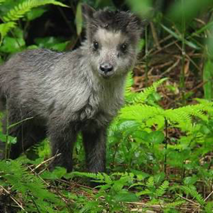These animals have very sensitive hearing and strong eyesight. The serow is able to detect and react to movement from a distance and it can see well in low lightning
In Japanese the word ochiru means both to fail an exam and to fall as the serow is known for its sure footedness on mountain cliffs students can buy omamori charms marked with a serow hoofprint in the hope it will help them pass exams
In Japan serows are widely thought of as a kind of deer though deer and serows are in different families. In the past the Japanese word kamoshika was written using the chinese character for shika meaning deer today when written using chinese characters the characters for antelope and sheep are used.
Japanese Serows leaves plant shoots and acorns alder sedge japanese witch hazel japanese cedar.In Japan the Japanese serow is most commonly known as kamoshika or kamoshishi it has historically been given a variety of names often based on its appearance some of which translates as mountain sheep wool deer nine tail cow and cow demon regional names abound some of which translate as dancing beast foolish beast or idiot japanese people often characterize the serow as weird of abnormal and it is seen as a phantom animal as it tends to live alone in the depths of distant forests and appears to observe forest workers from areas high in the mountains.
Japanese serows also have a very strong sense of smell that’s why they often raise their head and sniff the air around them.The Japanese serow is a small bovid it has a stocky body whose size varies little between sexes or geographic location its fur is whitish around the neck and fur on the body may be black black with a dorsal white spot dark brown or whitish the coat lightens in summer there are three well developed skin glands large preorbital glands in both sexes which increase in size as the animal ages poorly developed interdigital glands in all four legs and preputial glands. Both sexes have short backward curving horns measuring 12-16 centimeters 4.7-6.3 in the sheaths and have a series of transverse rings horns that begin to develop at about four months and continue to grow throughout life. Japanese serow live in japan honshu shikoku kyushu.

